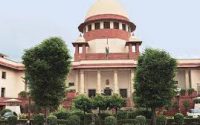Ram Nath Kovind or Meira Kumar: Presidential poll to decide today
Source – hindustantimes.com
The stage is set to elect the country’s 14th President.
A total of 4,896 lawmakers will vote on Monday to elect the successor of Pranab Mukherjee, who demits office on July 25.
Given the BJP-led NDA’s strength, its candidate Ram Nath Kovind appears to have the advantage against his opponent, Meira Kumar, a former Lok Sabha Speaker and the opposition’s nominee.
If elected, 71-year-old Kovind will be the second Dalit to become President after KR Narayanan.
The total combined value of votes in the presidential election is 1,098,903 — 549,408 for 543 Lok Sabha and 233 Rajya Sabha parliamentarians, and 549,495 for 4,120 legislators in state assemblies.
The halfway mark is expected to be 549,442, but that will depend on the number of valid votes.
Kovind is expected to garner more than 70% of the votes as the NDA enjoys a brute majority in the Lok Sabha and it also 17 states.
“We have the support of 21 chief ministers and more than 30 political parties,” said BJP general secretary Bhupendra Yadav, who is Kovind’s campaign manager.
Apart from the Janata Dal (United) that dealt a blow to the opposition camp by announcing its support to Kovind, the Telangana Rashtra Samithi, the YSR Congress Party, both factions of the AIADMK and the Biju Janata Dal have extended support to the former Bihar governor.
For her part, 72-year-old Kumar is banking on the “inner conscience” of lawmakers to defeat Kovind in a Dalit versus Dalit battle.
“It’s not a symbolic fight … It will be a good, tough fight,” CPI general secretary Suravaram Sudhakar Reddy said.
The opposition is hopeful of cross-voting in the absence of a whip by political parties.
But the fear of cross-voting has prompted Trinamool Congress head and West Bengal chief minister Mamata Banerjee to ask her party MPs to cast their votes in Kolkata.
Born on October 1, 1945, at Kanpur Dehat in Uttar Pradesh, Kovind was elected to the Rajya Sabha in 1994 and served two consecutive terms for 12 years till March 2006.
He was a lawyer in the Delhi high court and Supreme Court for about 16 years until 1993. He was the central government’s advocate in the Delhi high court from 1977 to 1979 and its standing counsel in the top court from 1980 to 1993. Kovind became advocate-on-record of the Supreme Court in 1978.
Kumar shares many similarities with Kovind. Both are Dalits, studied law, were active politicians and describe reading as their favourite pastime. Kumar joined the Indian Foreign Service in 1973 and after 15 years of service, she moved to politics.
Daughter of former deputy prime minister Jagjivan Ram, Kumar got elected to the Lok Sabha five times – first when she defeated BSP leader Mayawati and Ram Vilas Paswan from Bijnor in 1985.
In her long career, she had her share of controversies too. She landed in a row for occupying a bungalow in Lutyen’s Delhi by getting her father’s erstwhile residence converted into a memorial, even as she held another ministerial home.
The UPA government of the time wrote off a bill of Rs 1.98 crore that she owed.
Like her father, Kumar had strained ties with the Congress for a while. She quit the party in 2000 and returned two years later. After serving as a cabinet minister in the Manmohan Singh government, she became the first woman to occupy the Lok Sabha Speaker’s post in 2009.
Whether Kovind will win with a convincing margin or the “Bihar ki Beti (Bihar’s daughter)” is able to emerge triumphant in the war of ideologies will be known on July 20, when the poll result is scheduled to be declared.



